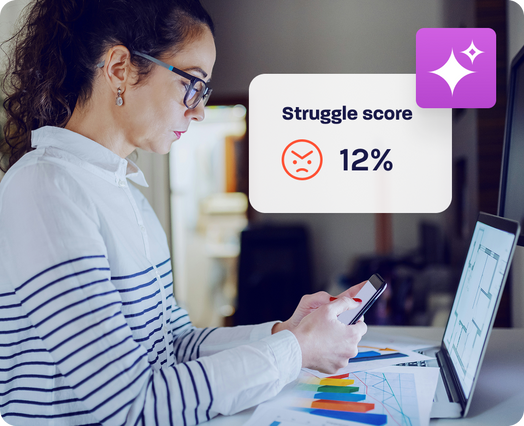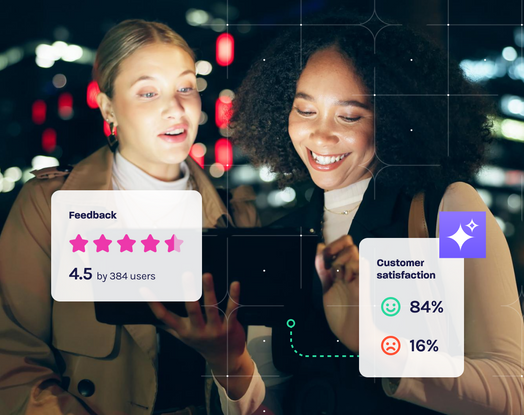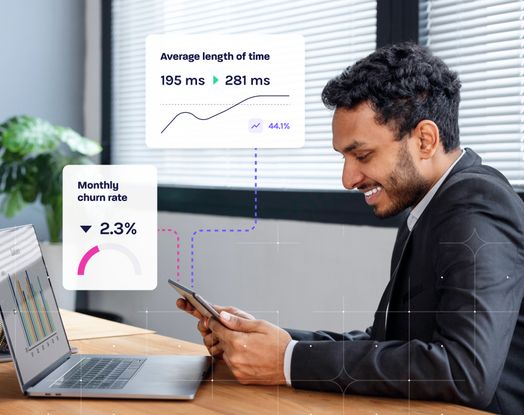
Overcoming barriers to digital experience on mobile apps
Like many brick-and-mortar retailers, Sephora faced a challenging business environment in the 2010s, with many consumers shifting away from in-store purchases. Total U.S. retail sector store closures topped out at more than 9,300 in 2019 alone, according to Coresight Research. The premium cosmetics retailer, however, found that a focus on providing exceptional digital experiences didn’t just spare it from the need to make widespread closures; investment in digital actually propelled substantial growth.
Sephora transitioned much of its customer engagement to its mobile app, offering tools that help customers get product recommendations, try on makeup virtually and quickly find products based on price, age range, specific benefits, ingredients and more. Sephora’s transition to mobile has powered its growth to the No. 1 specialty beauty retailer in the world.
Like Sephora, many enterprise companies stand to gain market share, increase revenue and drive customer retention by delivering an exceptional native mobile app experience. Native apps—more than other app types—empower deep engagement with your brand through better performance, the ability to use more of the smartphone’s technology capabilities and rich user interfaces.
Today, about 90% of mobile users’ time is spent within apps. But two common obstacles stand in the way of mobile product owners’ efforts to improve the in-app user experience. By understanding where these barriers exist and how to overcome them, mobile product owners can begin taking steps to improve downloads, conversions and usability.
Barrier One: It’s difficult to understand what’s happening and where customers are struggling in-app.
Gartner lays out a key premise for mobile product development and improvement: Focus on people, observe them in context and find out what they need. Ask yourself: What are the behaviors they’re using, the motivation for using them and the outcomes they’re trying to achieve?
In practice, understanding customers’ changing needs on a continuous basis can be challenging. Mobile apps have numerous screens, each of which contains hundreds of events, and each user’s journey through an app can vary greatly. Mobile product owners must also contend with substantially more variables than other digital product owners, including device models, operating systems and versions, CPU and memory usage, and impact on battery life, just to name a few.
This makes it immensely difficult to pinpoint which digital journeys are used most frequently, what’s causing customers to struggle in those journeys and how events on one screen influence users’ actions later on in a journey. Compounding this challenge is the fact that mobile app analytics are much less mature than other types of analytics, such as those for web.
Mobile product managers need intelligent digital customer journey mapping tools that spotlight the most important pathways customers use and the critical data needed to drive decision-making. Modern tools provide intuitive visualizations, crash analytics, journey and engagement analysis, session replays, network and device performance, version adoption trends and interaction maps. With these insights, mobile product owners can take action on the most impactful issues.
Barrier Two: It’s hard to prioritize changes and understand what will have the greatest impact on engagement and revenue.
Apps that are updated frequently have 19% higher retention rates on day 30 than those that are updated less frequently, according to Gartner. But not all updates have the same impact. Understanding which screens, events and interactions have the greatest impact on the user’s experience is critical—as is identifying the revenue impact of each part of a user’s journey through a mobile app.
To surmount this barrier, mobile product managers should look to artificial intelligence (AI) that can isolate exactly what’s most powerful to focus on. When paired with tagless capture that ensures that 100% of sessions and events are analyzed, AI can identify the most meaningful struggles happening in real time on a mobile app. It enables rapid prioritization by connecting the dots between a struggle and its revenue impact. For example, product managers of transactional e-commerce apps can determine potential revenue loss or, for functional/experiential apps, they can understand the influence a struggle has on future app interactions. Hidden revenue opportunities also become clear. For example, AI could highlight that a particular user behavior is happening more frequently, which points to an opportunity to better serve users through new features.
Mobile apps dominate today’s smartphone landscape, and as Sephora found, they can have an outsized impact on the brand-customer relationship. To deliver exactly what customers want from mobile apps, enterprises need more intelligent insights that enable more lucrative digital journeys.








